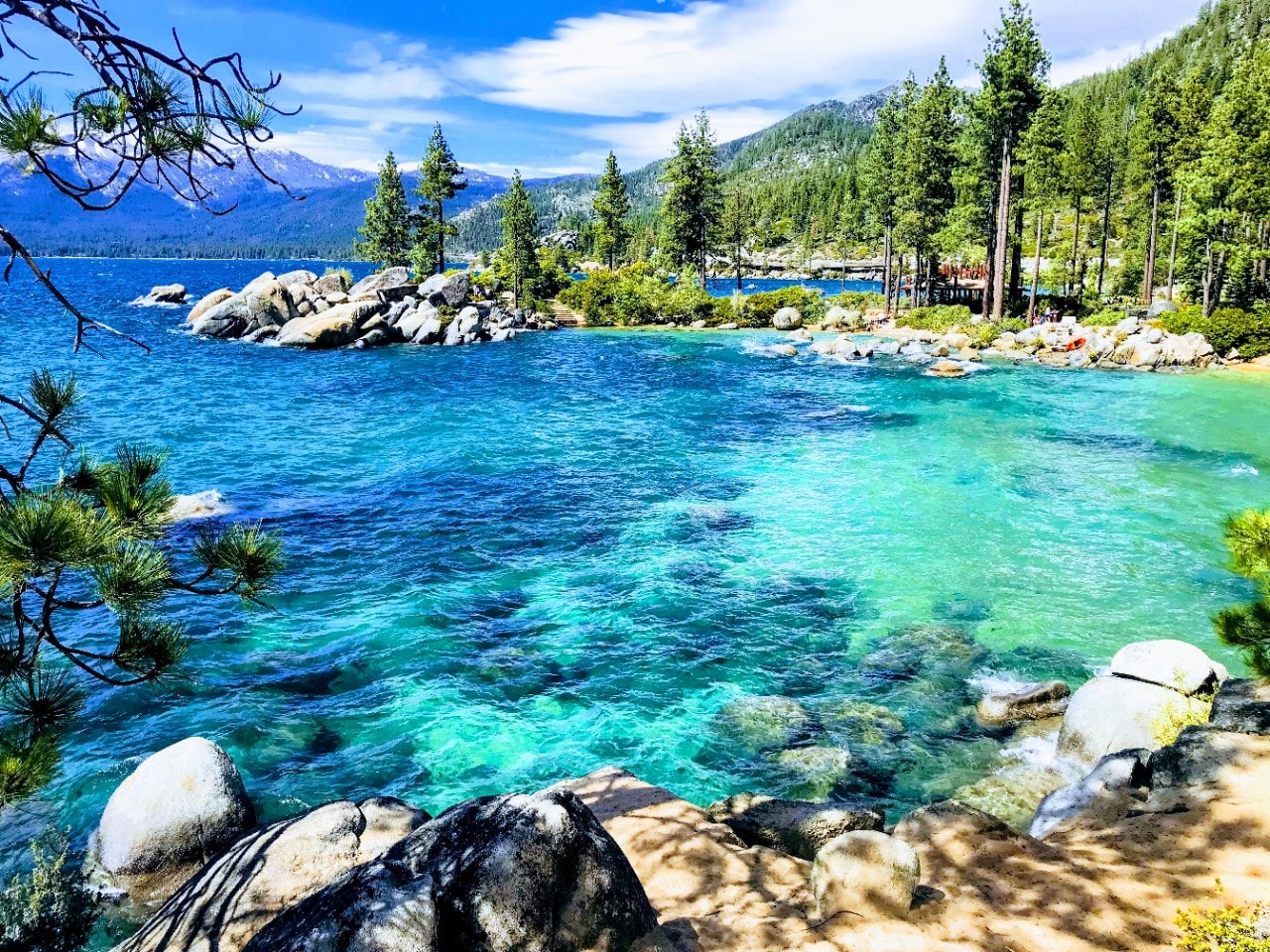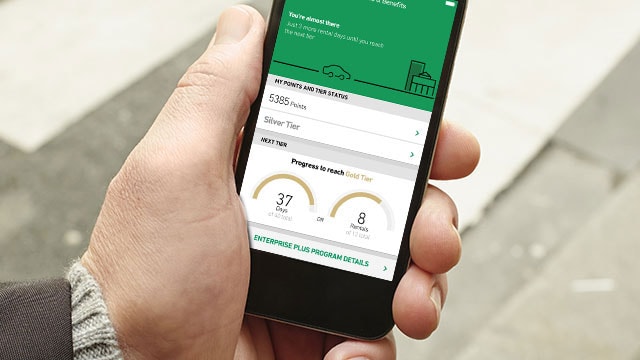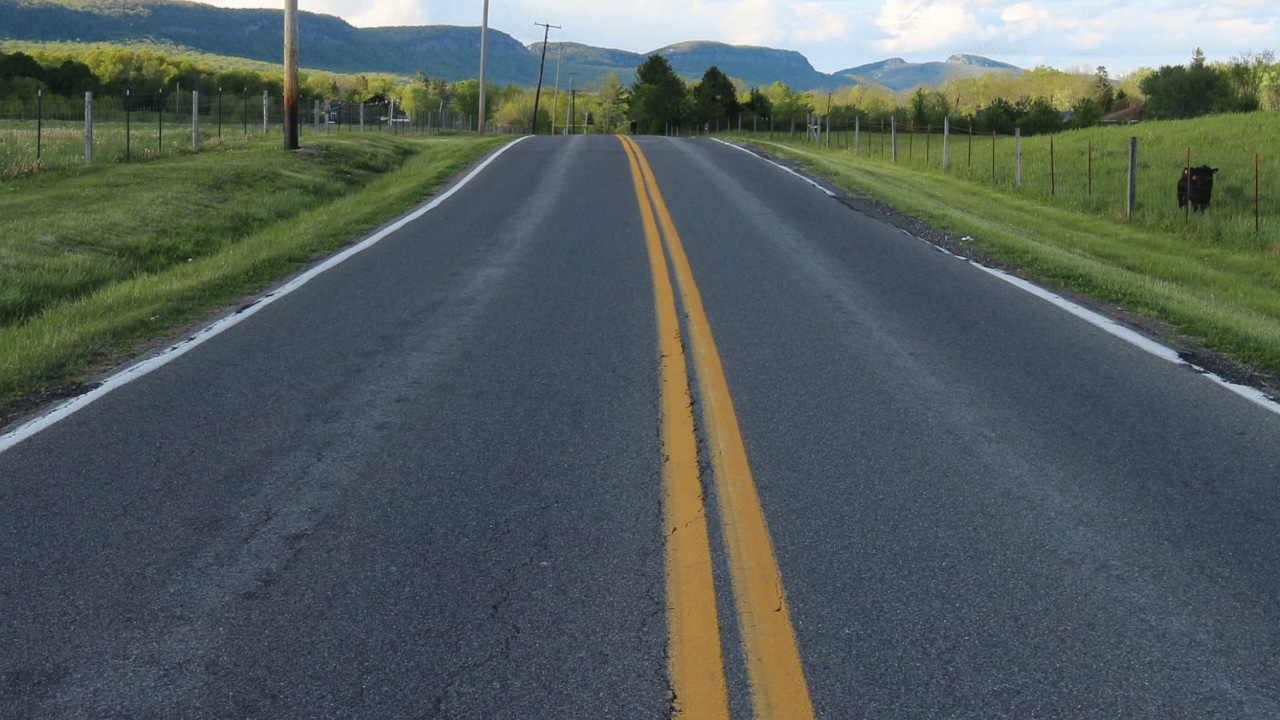Driving from Las Vegas to Lake Tahoe
Set your sights on some of the most magnificent places this country has to offer while driving from Las Vegas to Lake Tahoe. Along the way, you’ll zoom past striking landscapes that deliver natural grandeur of epic proportions. The Las Vegas to Lake Tahoe distance is approximately 543 miles, and the route north is wedged between lush mountain ranges and sand-swept desert as far as the eyes can see. Feel the breeze in your hair and the sun upon your face while discovering the open road. Full of sunshine, adventure and moments of pure joy around every bend, this road trip allows you to explore places you’ve never been – or experience them like never before.
Explore out west in a vehicle that’s perfect for your Las Vegas to Lake Tahoe road trip by renting at one of our many Las Vegas neighborhood locations. Flying in? Perfect! Stop by our airport location and pick up your rental shortly after you touch down in Sin City.
Drive Time from Las Vegas to Lake Tahoe: approximately 8 hours and 59 minutes
Distance from Las Vegas to Lake Tahoe: approximately 543 miles
Best Car for this Road Trip: Convertible
1. Las Vegas
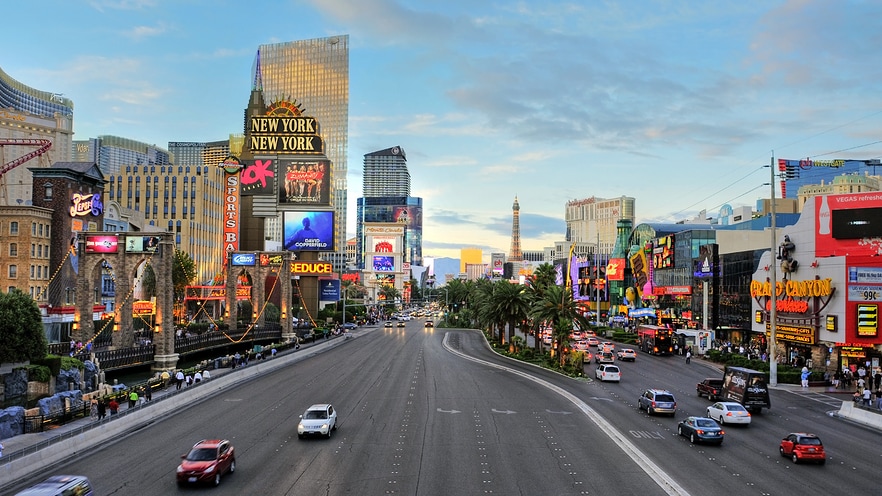
Las Vegas Strip. Photo Credit: Bigstock
Get your adrenaline pumping by experiencing one of the city's best heart-pounding attractions. Set your sights on the High Roller Observation Wheel, a Ferris wheel that takes you 550 feet over the Strip and offers unforgettable views of the city. For an even bigger challenge, head to the Stratosphere's SkyJump, where you can jump from a height of 829 feet. You could also ride the X-Scream, which catapults you 1,149 feet over the Strip.
Next, satisfy your hunger at the Bacchanal Buffet at Caesars Palace. This is considered the city's best all-you-can-eat spot. Whether you're in the mood for a healthy acai bowl, global street fare, or an incredible array of desserts, you can satisfy your cravings here.
2. Death Valley National Park
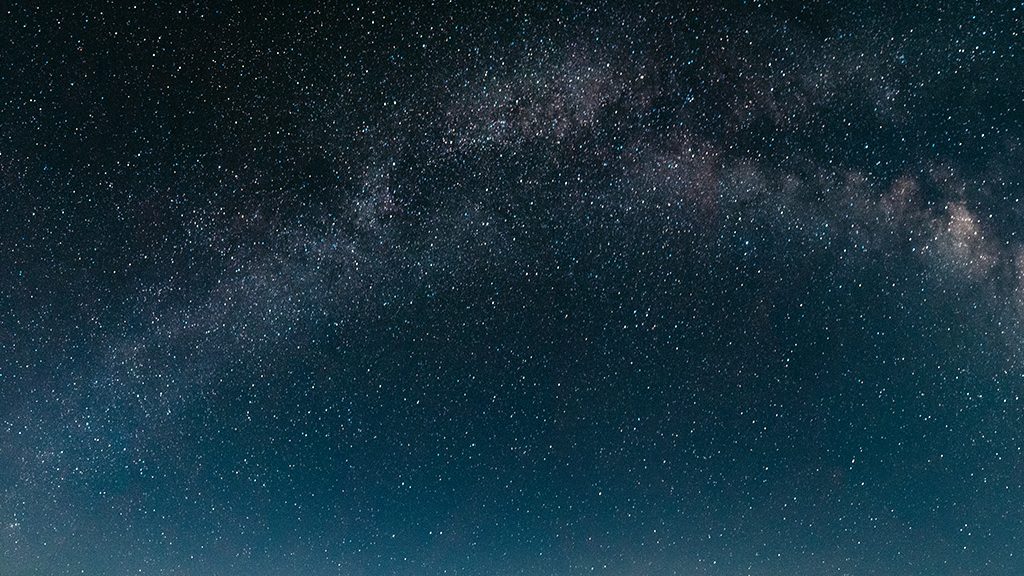
Death Valley National Park
Get lost (not literally!) in the nearly three million acres of wilderness at Death Valley National Park. Reigning supreme as the largest national park in the contiguous United States, there are almost endless things to do in Death Valley National Park. Nestled between the barren desert and snow-covered mountains, visitors can explore historic sites, traverse rugged terrain and observe the wildlife that calls this region home. Make it an overnight adventure with a Death Valley National Park camping trip of a lifetime. Stark in appearance but abundant in recreation, outdoor enthusiasts can hike epic trails, drive the backcountry roads, explore the valley and gaze at the stars above. Although Death Valley National Park weather creates a land of extremes, the wilderness provides spring-fed oases, twisting canyons, swirling sand dunes and reflective salt flats. For the ultimate Death Valley experience, go on a ranger-guided tour for an in-depth perspective of the driest, hottest and lowest national park.
- Tip: Cell phone and internet service is limited within the park; some major carriers may find (slow) service in Furnace Creek and Stovepipe Wells
- Cost: $30/vehicle; $25/motorcycle; $15/individual traveling on foot or bicycle; $55/annual pass
- Dog Friendly: Yes, but only in developed areas like the campgrounds and roads
3. Mammoth Lakes
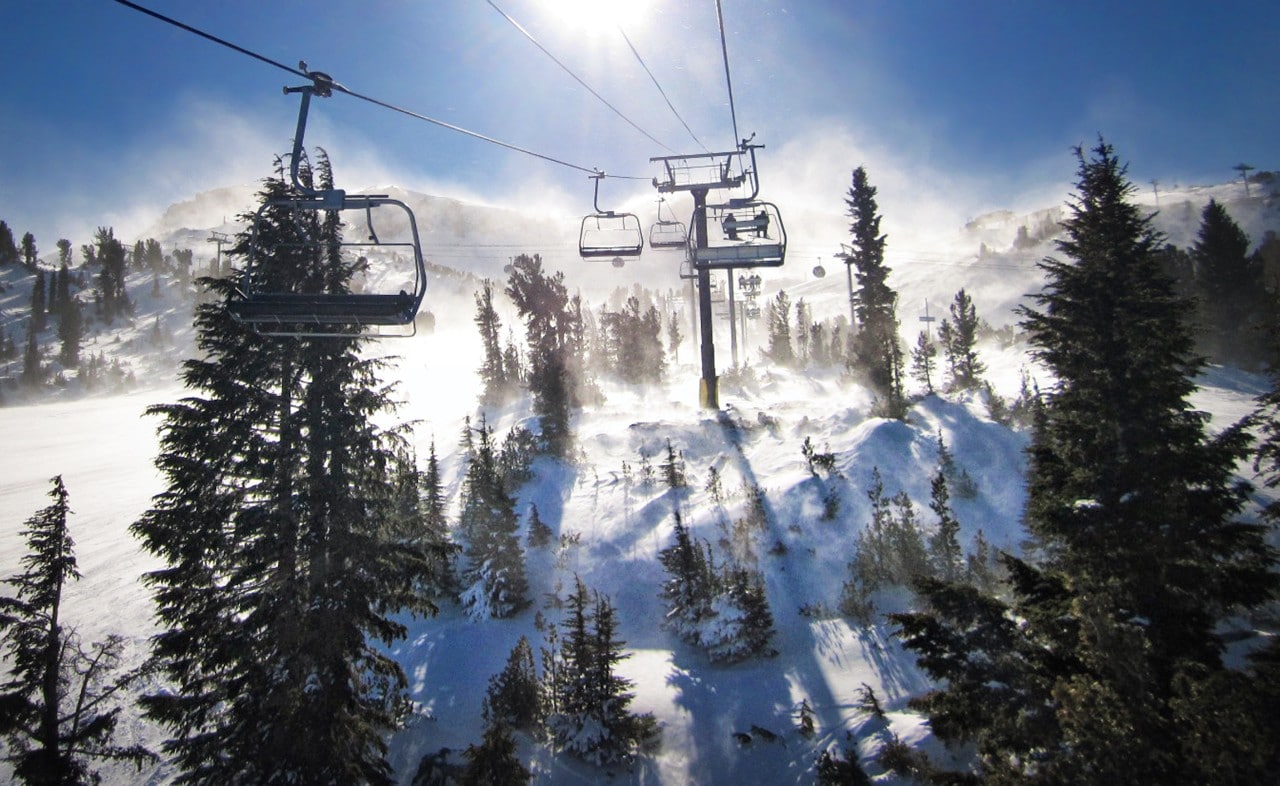
Mammoth Lakes
Mammoth Lakes serves as Mother Nature’s amusement park year-round. Surrounded by alpine beauty in every direction, Mammoth Mountain Ski Area provides powdered peaks in the winter and secluded trails, lush golf courses and rushing rivers in the summer. Once the frigid snow and ice melt, the wilderness comes alive with the emergence of Rainbow Falls and the portal to Yosemite National Park. Spend your time admiring the magnificent mountain views, Mammoth Lakes hot springs and adventure around every corner. With every season’s unreal experiences, you’ll quickly discover why Mammoth Lakes is one of California’s most famous hot spots.
- Tip: Since Mammoth Lakes weather is inconsistent, make sure to pack the appropriate items for quickly changing conditions; Spend less time walking around and use the free bus system to get to the lifts
- Cost: Ski lift tickets: $89/adult, $73/ages 13-22 and seniors, $40/ages 5-12
- Dog Friendly: Yes, but they’re only permitted on the Public Access Corridor
4. Yosemite National Park
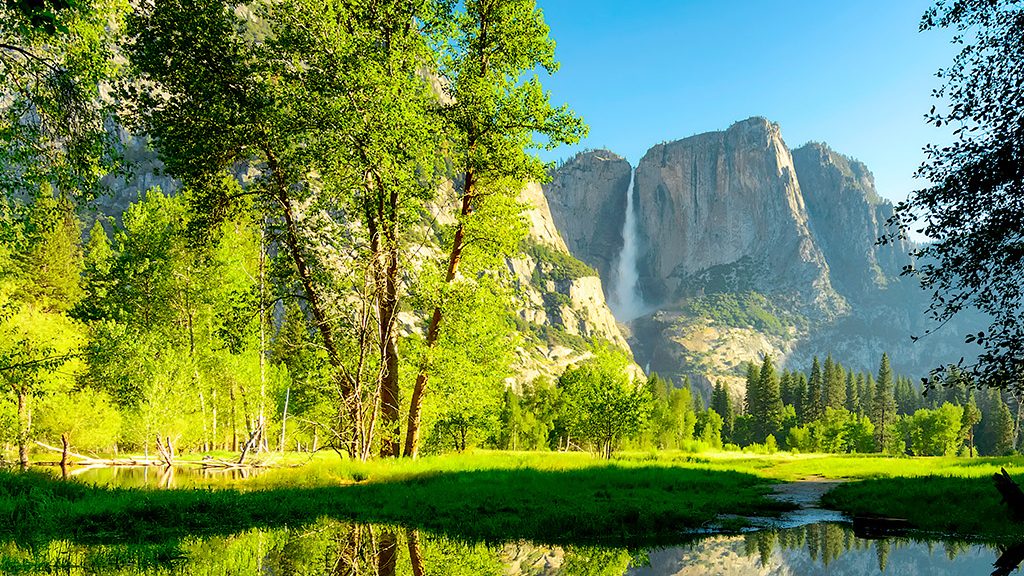
Yosemite National Park
Lovers of the great outdoors will enjoy spending time immersed in nature at Yosemite National Park. Yosemite is a popular destination all year round, featuring cascading waterfalls, deep valleys and high mountain peaks. Whatever the season, Yosemite National Park weather creates ideal conditions for endless recreation, like high-elevation hiking in the summer and downhill skiing in the winter. Visitors will experience an epic display of granite cliffs, mighty glaciers and tranquil forests filled with giant sequoias. Surrounded by well-known granite formations like the Half Dome and El Capitan, the grandeur of the park’s indigenous rock backdrop and breathtaking wildlife will have you snapping pictures along every step of your adventure.
- Tip: Plan ahead as many iconic hikes require special permits
- Cost: $35/vehicle, $30/motorcycle, $20/person on foot/bicycle (free ages 15 and under); $70/vehicle Yosemite pass
- Dog Friendly: Yes, dogs are allowed on fully paved roads, sidewalks, parking areas and bicycle paths
5. Carson City
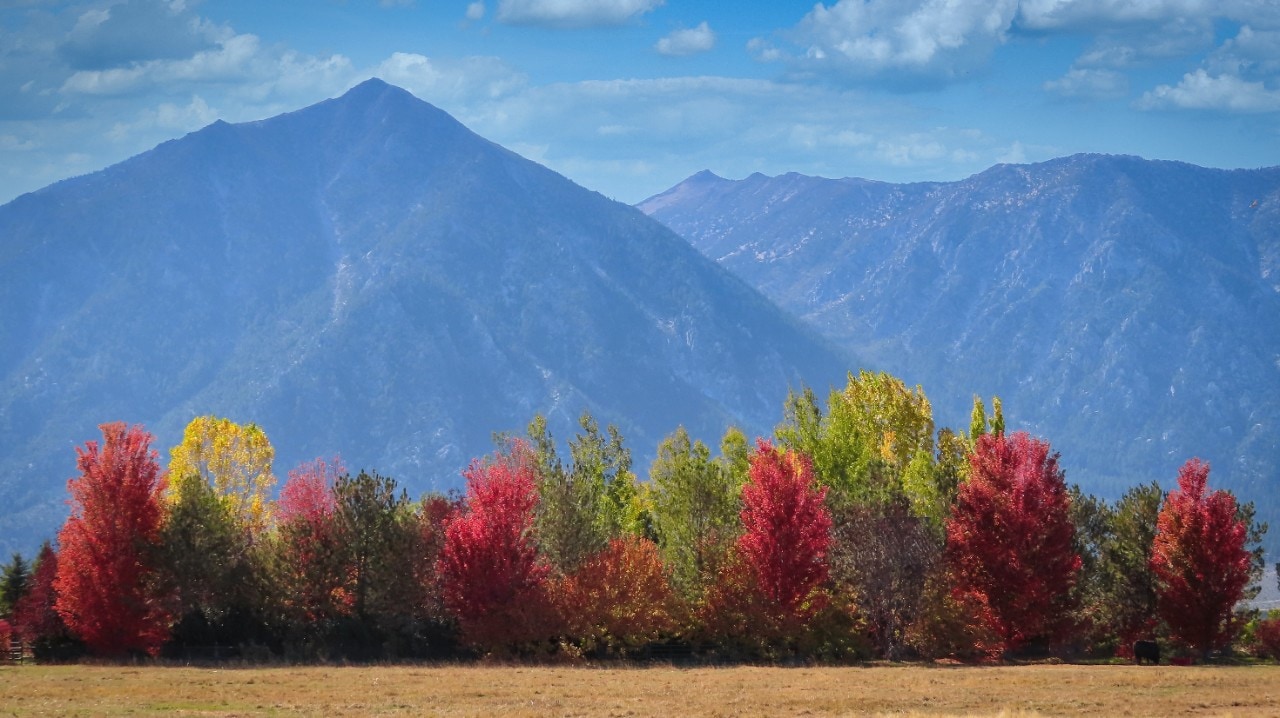
Carson City
Located about 30 minutes outside Lake Tahoe is Carson City, a historic town filled with mountain air and rough-and-tumble energy. Besides pressing your luck at one of the 13 Carson City casinos, this bustling locale comes alive with fantastic entertainment, top-rated restaurants and modern bars that add extra flair to the Western experience. From museums and art galleries to theaters and golf courses, there’s plenty of things to see and do year-round when visiting Nevada’s capital city.
- Tip: Set some cash aside for tipping various industry workers and casino dealers
- Cost: Varies depending on the activity
- Dog Friendly: No
Ready to feel the breeze on the open road? Reserve your car today!
6. Lake Tahoe
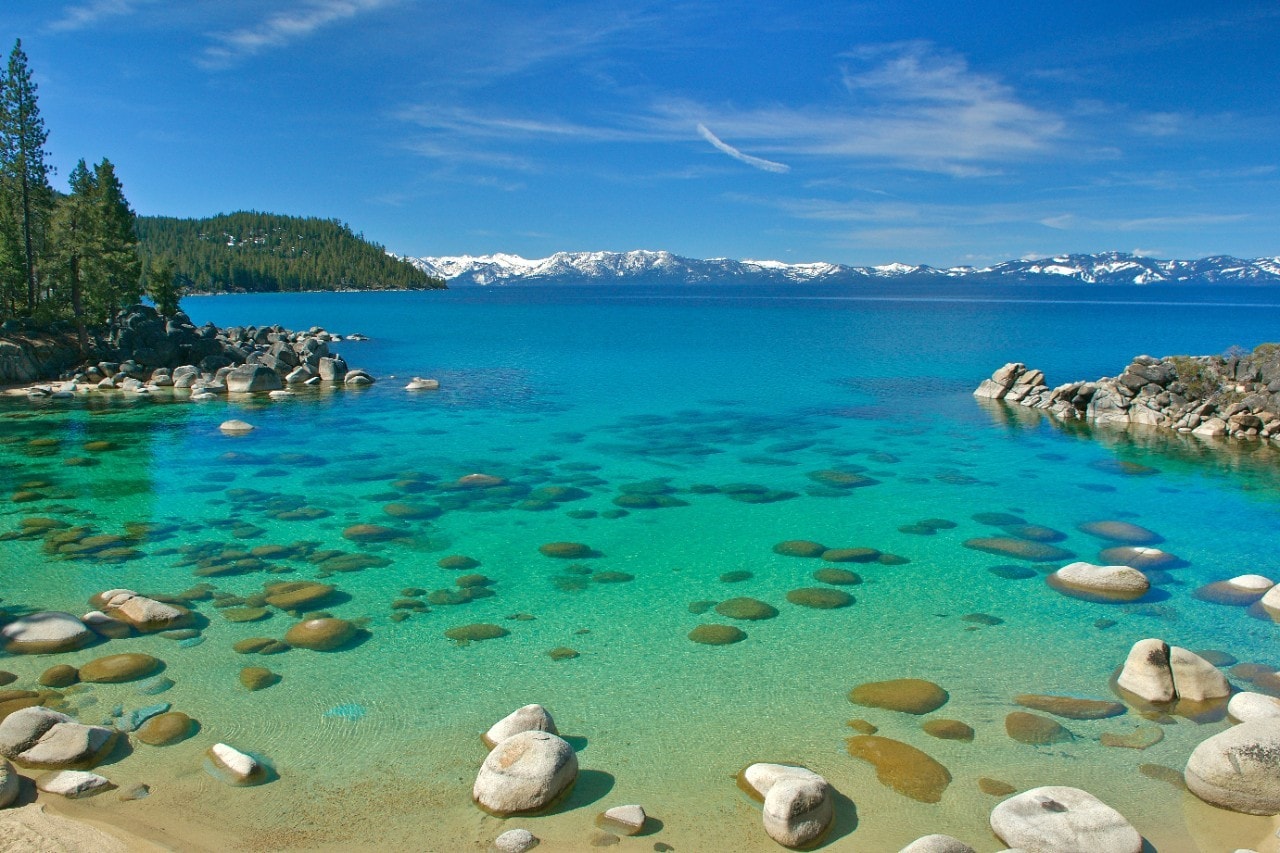
Lake Tahoe East Shore. Photo Credit: Getty Images.
Once you've driven another 150 miles on U.S. 50 North and 50 West, you'll arrive at gorgeous Lake Tahoe. After experiencing such extensive desert landscapes during this trip, you might be surprised to see the sparkling lake, verdant surroundings, and lively attractions. You can get a glimpse of Lake Tahoe in a few hours, especially if you focus on the Nevada side.
Head to Lake Tahoe Nevada State Park, where you can take your pick from laid-back stretches of sand and beautiful lakefront areas. Swim and sunbathe at Sand Harbor or go boating and fishing around Spooner Lake. You'll also find several trailheads in the area, making Lake Tahoe the perfect place to stretch your legs.
Las Vegas to Lake Tahoe FAQs
Death Valley National Park is the most popular destination along the Las Vegas to Lake Tahoe drive. Located just 130 miles from Sin City and 331 miles from Lake Tahoe’s southern shores, Death Valley is a great place to stop and explore some of Earth’s most epic geological wonders.
During the summer (May-September), Death Valley’s temperatures reach an average of 100 degrees Fahrenheit, often surpassing 120 degrees Fahrenheit. Although famous for being the hottest place on Earth – holding the world record at 134 degrees Fahrenheit in July 1913 – Death Valley experiences average winter temperatures from the mid-60s to low 70s, sometimes dropping into the 30s.
North Lake Tahoe offers a calm, family-friendly atmosphere and is excellent for travelers seeking a more peaceful getaway. South Lake Tahoe is a great destination for those wanting a lively social scene as it features casinos, musical entertainment and a variety of bars and clubs perfect for dancing the night away.
